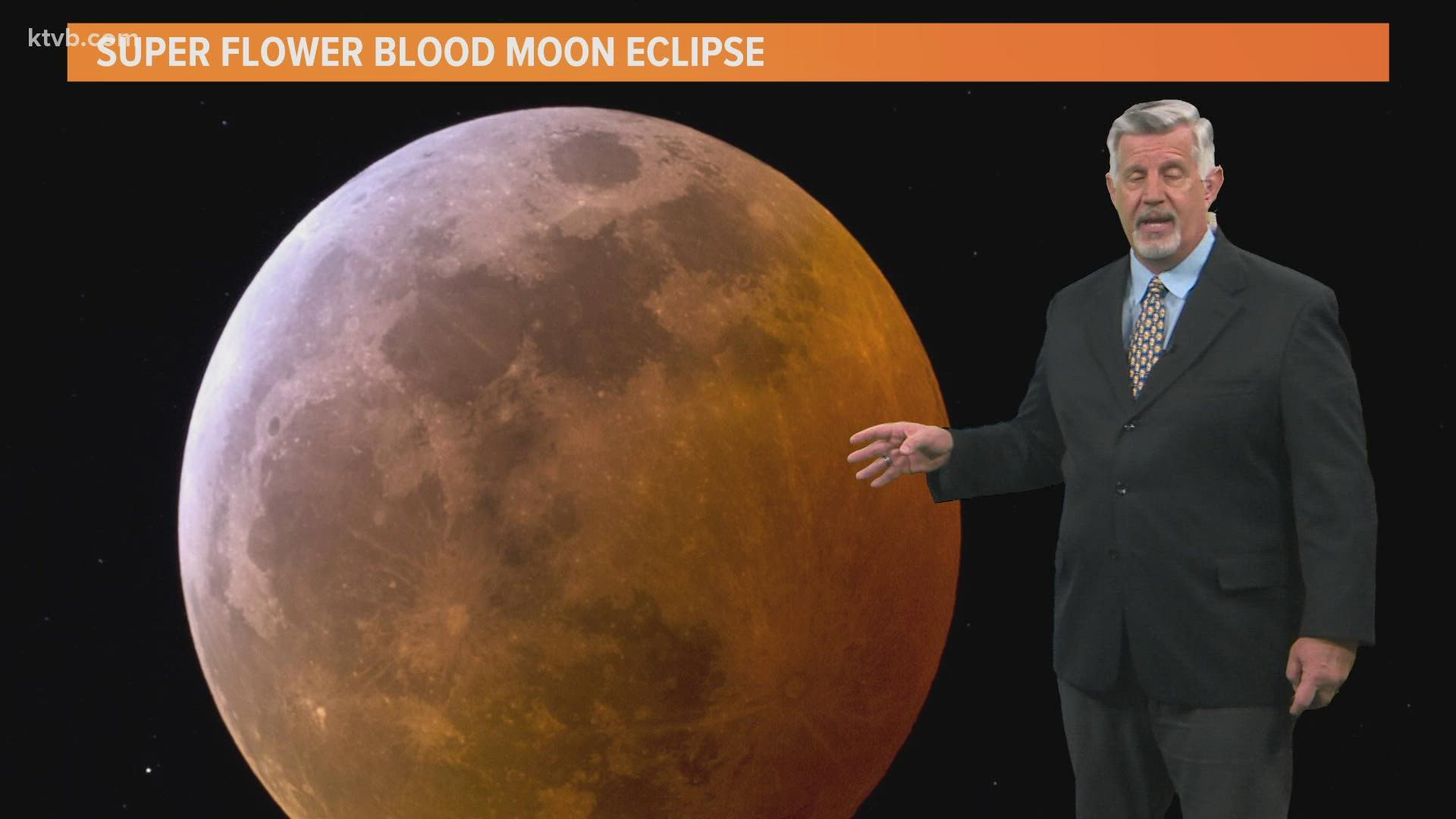BOISE, Idaho — Much of the U.S., including Idaho, will see the "Super Flower Blood Moon" total lunar eclipse this weekend.
The sun, moon and Earth will align Sunday night, with Earth casting a shadow on the full moon's surface. The shadow gives the moon a striking reddish hue — that's why lunar eclipses are also called blood moons.
This month's full moon is a "super moon," meaning it looks bigger and brighter than usual because it's at the closest point to Earth in its orbit. The "flower" part comes from the May full moon's spring-themed nickname.
Here's what NASA says to expect:
In the Mountain Time Zone, totality of the lunar eclipse starts at about 9:30 p.m. Sunday. The moon will become visible shortly before 9 p.m.
The eastern half of the United States and all of South America will have the opportunity to see every stage of the lunar eclipse. In Idaho and other parts of the western U.S., some stages before totality won't be visible because the sun will still be up.
If it's cloudy, NASA will have a livestream Sunday night.
Unlike a solar eclipse, you don't need eye protection to watch a lunar eclipse — but binoculars or a telescope will certainly help improve the view.
NASA says the moon looks red during a lunar eclipse because of Rayleigh scattering, the same reason the sky is blue. Thanks to its longer wavelength, red light travels more directly through the atmosphere than blue light. The sun produces both wavelengths, but blue light is only visible from Earth's surface when the sun is overhead.
During a lunar eclipse, blue light scatters in Earth's atmosphere and only red light reaches the moon. It looks even redder if Earth's atmosphere has a lot of light-blocking dust and clouds.
Watch more weather:
See the latest weather forecasts and news in our YouTube playlist:

